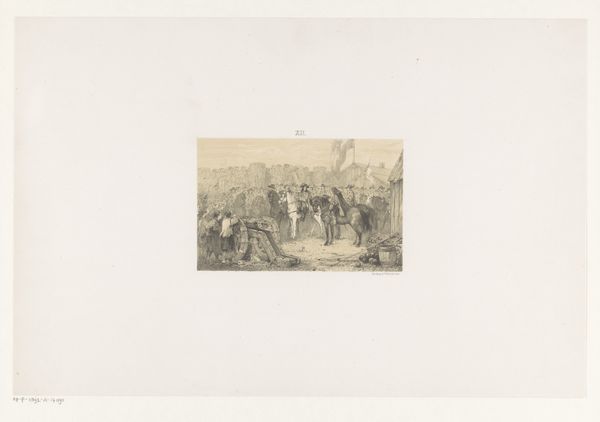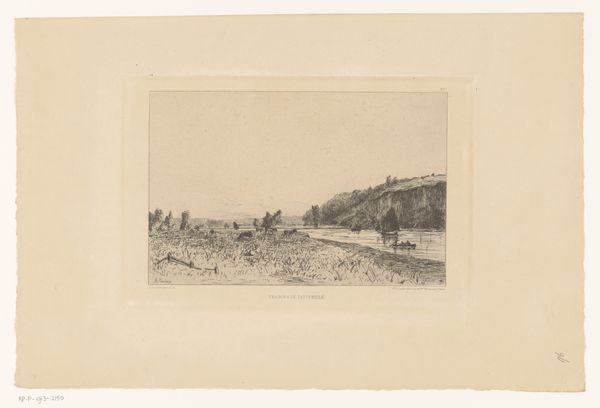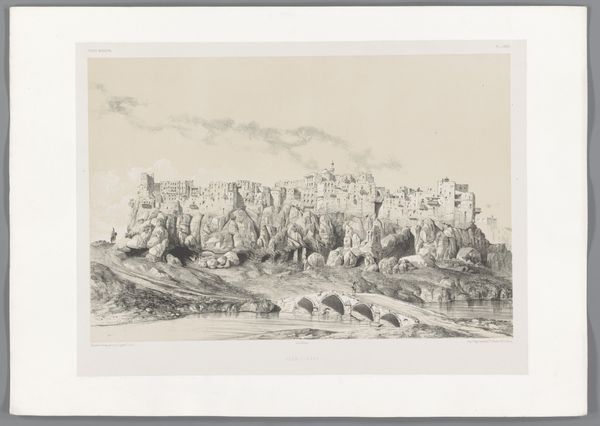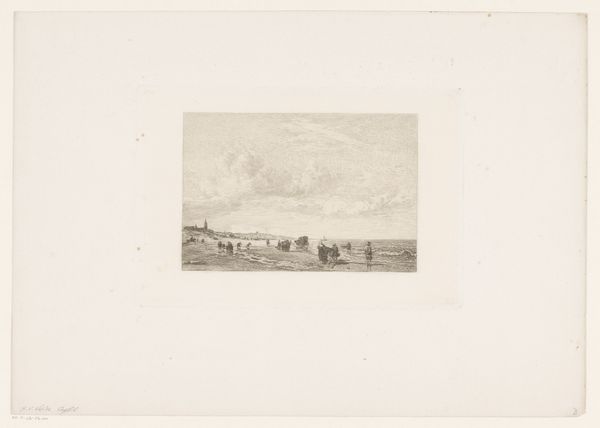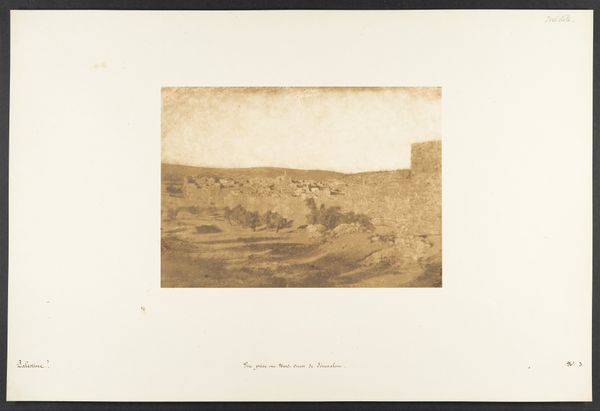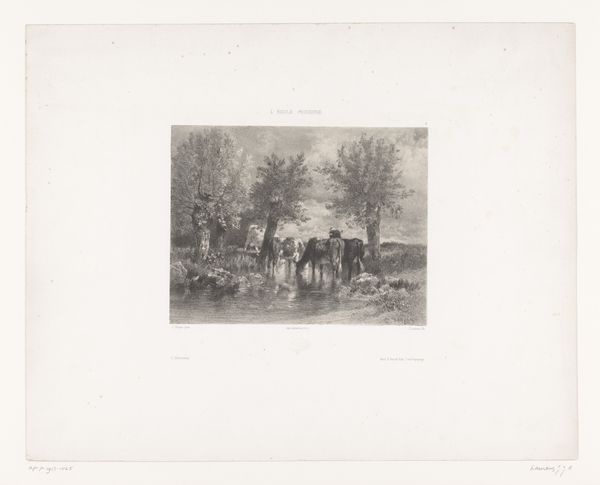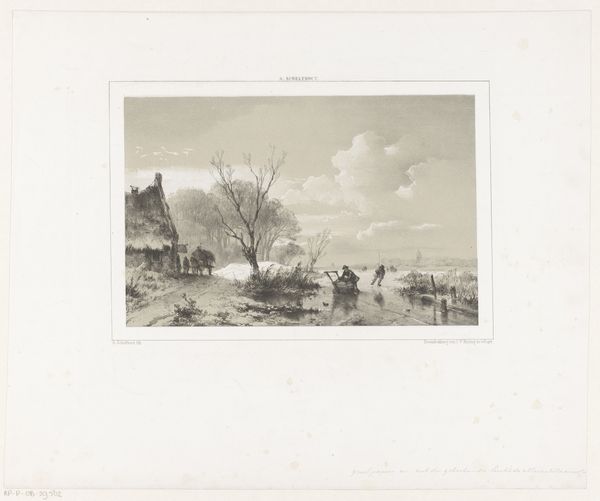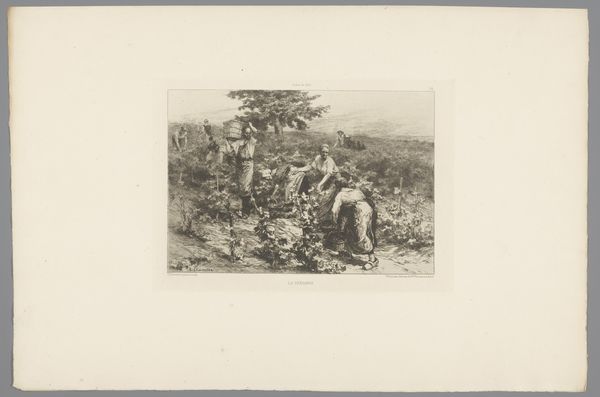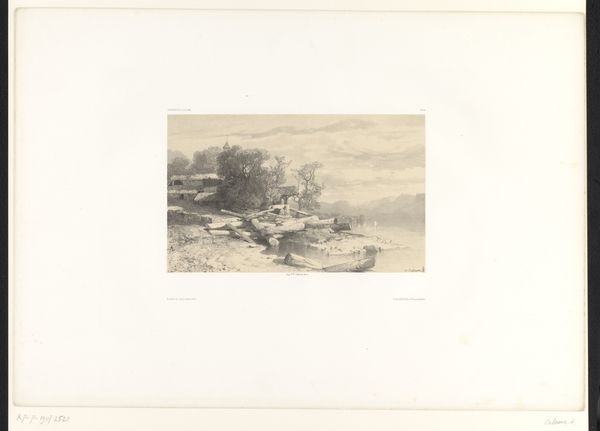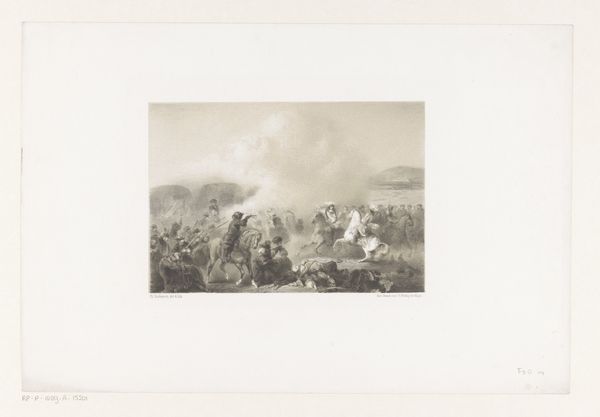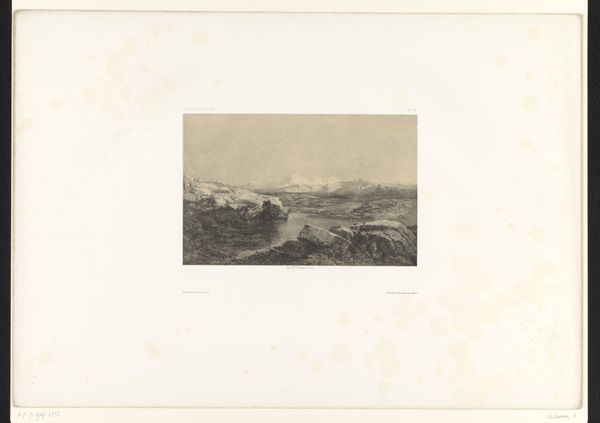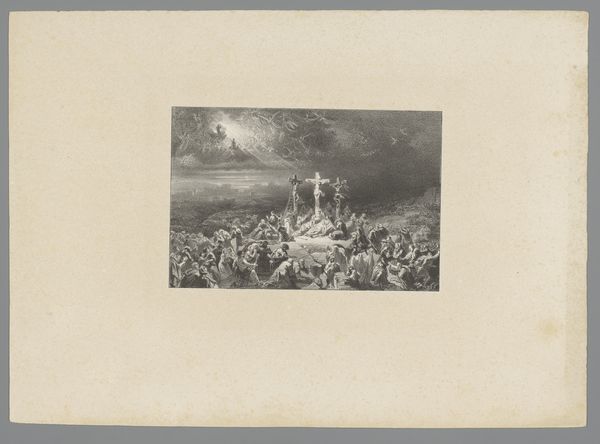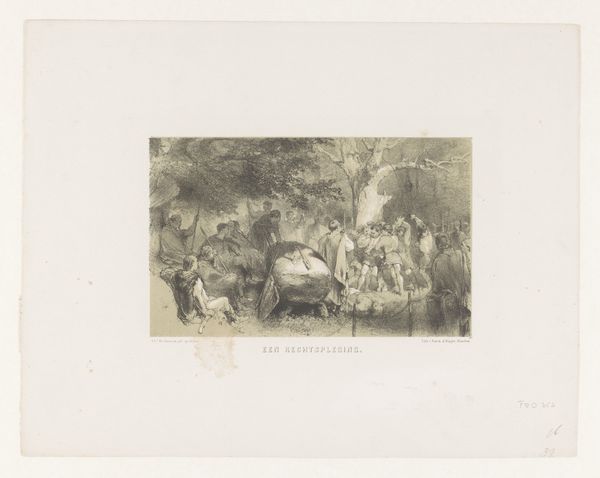
drawing, print, paper, ink, engraving
#
drawing
#
narrative-art
# print
#
landscape
#
figuration
#
paper
#
ink
#
romanticism
#
genre-painting
#
history-painting
#
engraving
Dimensions: height 348 mm, width 527 mm
Copyright: Rijks Museum: Open Domain
Curator: Here, we have Charles Rochussen's "Strijd tussen ruiters en boeren," a work whose creation precedes 1847. It’s an ink drawing and engraving printed on paper. Editor: My initial impression is chaotic—a flurry of motion. The eye struggles to find a restful spot amidst the tumult. Is this intentionally disorienting, perhaps mirroring the experience of conflict? Curator: Absolutely. Rochussen operated in a period defined by immense societal upheaval and political change, and these themes of struggle, of ordinary people caught in extraordinary circumstances, permeate his genre scenes and historical paintings. Think of it in terms of how art institutions displayed narrative paintings in the mid-19th century—placing value in works portraying a political position or message, to advocate social change and inform a public consensus. Editor: I'm struck by the Romantic undercurrents too. Despite the medium—ink on paper—there is an attempt to monumentalize. Look at the scale, the dramatic interplay of light and shadow, and how he situates the riders against a tempestuous landscape that suggests forces beyond the human. It provokes, questions—what exactly is Rochussen’s message, or is the struggle more amorphous? Curator: Consider the positioning of the farmers—it challenges heroic conventions that commonly appear in artwork celebrating triumph or victory. Rochussen offers a perspective that makes visible and valued the historical roles and impact of common peoples caught in struggles against larger powers. Editor: So, in essence, we see Rochussen making accessible to a popular audience those moments, those faces, that formal history so often leaves unacknowledged? It gives those that exist outside traditional definitions of authority or accomplishment a crucial sense of recognition. Curator: Precisely. In a time of limited visual representation, artwork played an undeniable role. The artwork acts as a point for generating public conversations about conflict and justice. Editor: Examining Rochussen's piece reminds me of the power inherent in visually depicting conflict. I walk away pondering the artwork's political message and relevance in our times. Curator: Indeed. By prompting those discussions, and prompting critical inquiries regarding past power relations, the artwork itself gains greater potential impact.
Comments
No comments
Be the first to comment and join the conversation on the ultimate creative platform.
